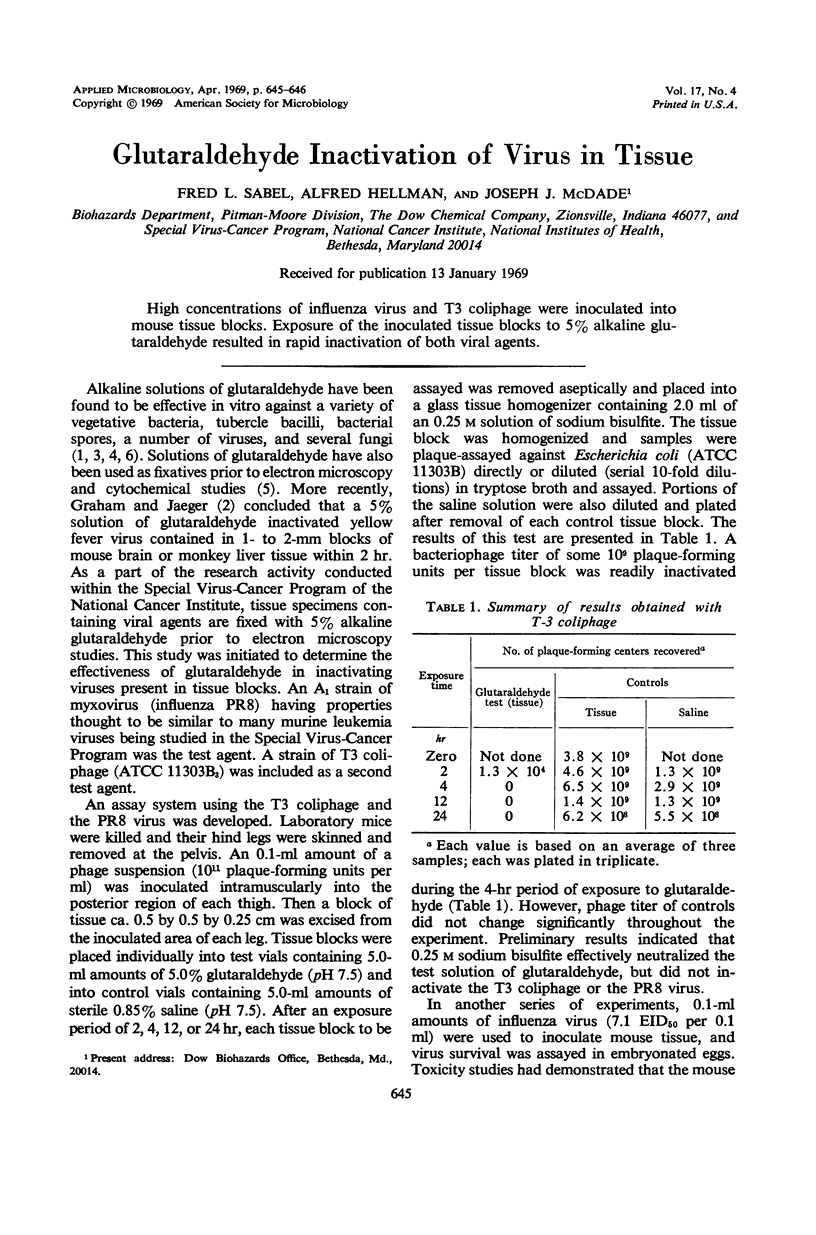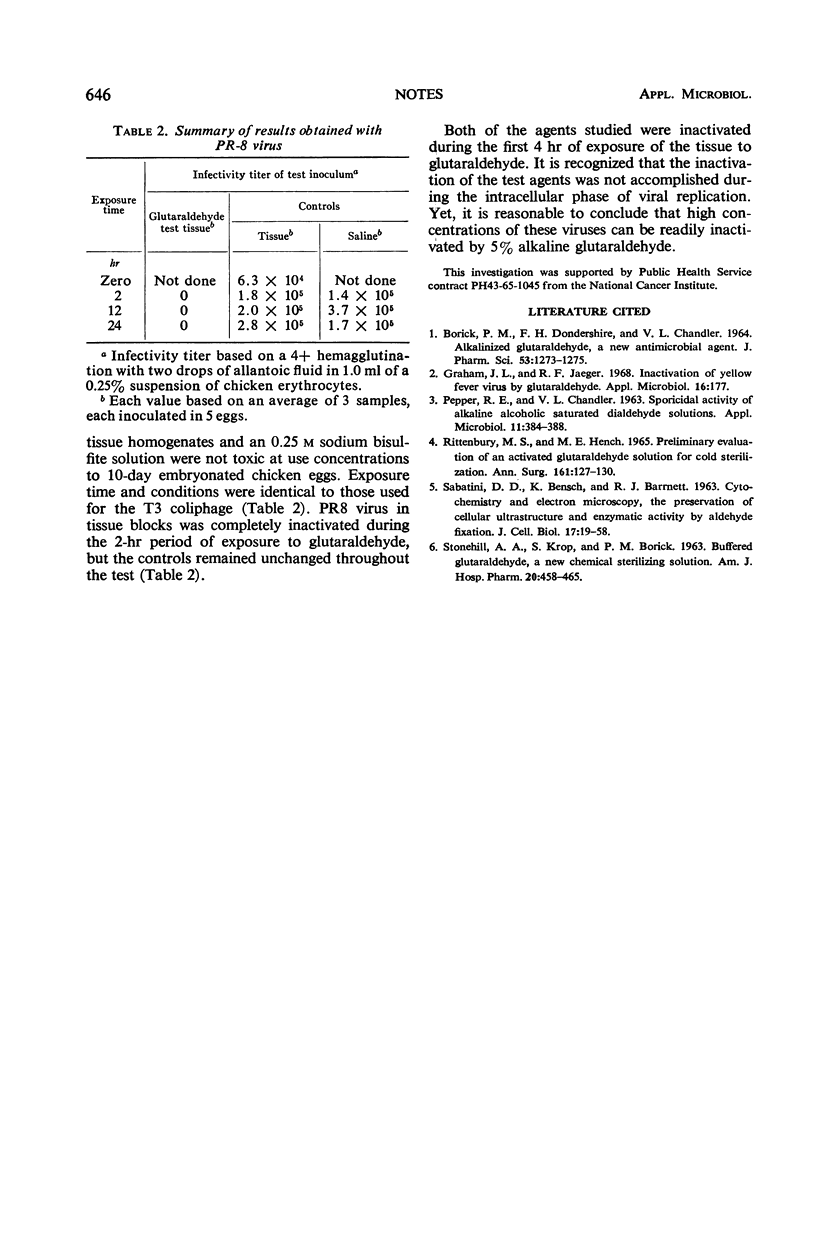Abstract
High concentrations of influenza virus and T3 coliphage were inoculated into mouse tissue blocks. Exposure of the inoculated tissue blocks to 5% alkaline glutaraldehyde resulted in rapid inactivation of both viral agents.
Full text
PDF

Selected References
These references are in PubMed. This may not be the complete list of references from this article.
- BORICK P. M., DONDERSHINE F. H., CHANDLER V. L. ALKALINIZED GLUTARALDEHYDE, A NEW ANTIMICROBIAL AGENT. J Pharm Sci. 1964 Oct;53:1273–1275. doi: 10.1002/jps.2600531041. [DOI] [PubMed] [Google Scholar]
- Graham J. L., Jaeger R. F. Inactivation of yellow fever virus by glutaraldehyde. Appl Microbiol. 1968 Jan;16(1):177–177. doi: 10.1128/am.16.1.177-.1968. [DOI] [PMC free article] [PubMed] [Google Scholar]
- PEPPER R. E., CHANDLER V. L. SPORICIDAL ACTIVITY OF ALKALINE ALCOHOLIC SATURATED DIALDEHYDE SOLUTIONS. Appl Microbiol. 1963 Sep;11:384–388. doi: 10.1128/am.11.5.384-388.1963. [DOI] [PMC free article] [PubMed] [Google Scholar]
- RITTENBURY M. S., HENCH M. E. PRELIMINARY EVALUATION OF AN ACTIVATED GLUTARALDEHYDE SOLUTION FOR COLD STERILIZATION. Ann Surg. 1965 Jan;161:127–130. doi: 10.1097/00000658-196501000-00020. [DOI] [PMC free article] [PubMed] [Google Scholar]
- SABATINI D. D., BENSCH K., BARRNETT R. J. Cytochemistry and electron microscopy. The preservation of cellular ultrastructure and enzymatic activity by aldehyde fixation. J Cell Biol. 1963 Apr;17:19–58. doi: 10.1083/jcb.17.1.19. [DOI] [PMC free article] [PubMed] [Google Scholar]


